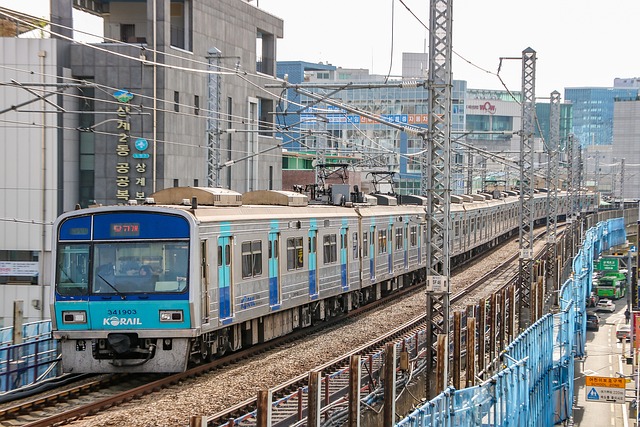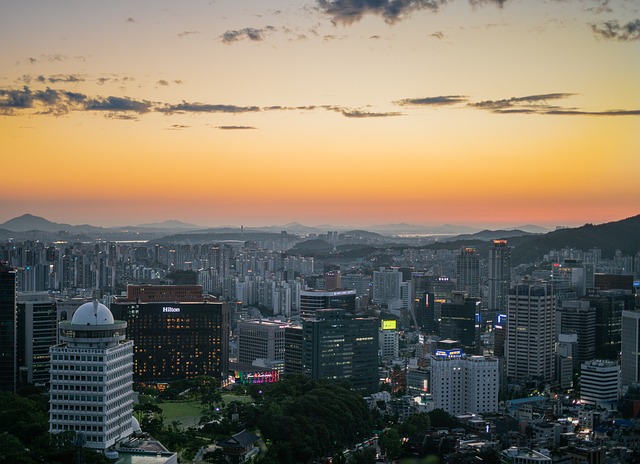Seoul offers exciting attractions for vacationing families or solo travelers alike. Visit Lotte World Tower to get an amazing bird’s-eye view of the city, or see cherry blossoms bloom during their seasonal blooming in spring.
To navigate the city efficiently, purchase a T-money transit card at a convenience store and make sure that you tap it when boarding and disembarking subways, buses and taxis. Dhaka to Seoul is just one of the recent routes available for all interested so getting in the city is very easy.
Stay in a Hanok
Seoul is an ideal city for discovering a new culture while enjoying first-class travel accommodations without breaking your budget. Here you can visit ancient religious shrines, sample local cuisine, and stay at some of the world’s premier hotel accommodations without spending all your travel money on hotel rooms alone.
Hanoks are traditional Korean houses dating back to the 14th century, featuring beautiful wooden frames with curved roofs that make these residences as visually striking on the outside as on the inside. Staying in one will provide an unforgettable experience – their tranquil and soothing surroundings making it the ideal spot for relaxation after an active day of discovery!
Nuha Hanok Guesthouse is located in Seochon’s historic district, making it within walking distance to many restaurants and cafes. Offering soundproof rooms, kitchen facilities and on-site parking – Nuha makes an ideal destination for couples or groups of friends looking to experience some history during their trip!
This traditional Hanok guesthouse should be on every traveler’s itinerary when visiting Korea. Visitors have described their time here as being like living out a fairytale – homey atmosphere combined with luxurious amenities will surely impress any visitor!
This luxury boutique hanok is an oasis of serenity for anyone seeking a retreat from modern life’s hustle and bustle. Featuring wooden beams and lighting that transport you back in time, spacious rooms, dedicated dressing areas and luxury spa amenities will leave you feeling truly indulged. This property’s wooden beams and lighting provide the perfect ambience, while spacious rooms with dedicated dressing areas will leave you feeling truly indulged. This elegant retreat provides the ideal setting to escape its busy atmosphere!
Take the Subway
Subway systems in Seoul are an easy and efficient way to travel quickly around the city, with base fares starting from just under $3 USD, making them more economical than taxis or ride-sharing apps. Furthermore, Seoul is a dense city so many attractions and restaurants can be seen more efficiently on foot!

Metro stations are clearly labeled with their exit numbers and maps are provided inside to assist in finding your destination. Furthermore, many major tourist spots are announced in English, Japanese and Chinese to aid navigation! Therefore even if your Korean is limited you should still have no problem making your way around!
Know that most stations offer lockers of various sizes that you can rent for a nominal fee – these lockers are located inside each station and payment can be made with your T-Money Card!
Don’t forget that Korea offers an extensive bus system, making hopping on and off super simple. Tickets can be purchased for single journeys at most subway stations and convenience stores; it is best, though, to preload your T-Money card before arriving in Korea.
Opting for the ideal neighborhood when visiting Seoul is key. Shopaholics and foodies will enjoy Itaewon’s fast-paced retail, while history enthusiasts will appreciate Insadong’s ancient palaces and art galleries, not to mention its nightlife venues such as karaoke rooms and pop-up art shows in Hongdae.
Eat Local
Seoul offers many neighborhoods with distinctive characteristics, and finding your perfect district makes a huge difference in experience. Foodies and shoppers will feel right at home in Itaewon or Myeongdong; art connoisseurs won’t be able to resist Insadong; history buffs will appreciate Gyeongbokgung Palace; while night owls should visit Hongdae – known for its noraebangs (karaoke rooms), pop-up art shows, and buskers!

Though Seoul is considered safe for tourists, visitors should still exercise common sense when in public. Women should keep valuables close at hand and avoid leaving bags unattended; thieves may target foreign travelers; so keep your passport secure at all times and be aware of your surroundings – pickpocketing and purse-snatching are common in the city.
At local restaurants, remember that it is impolite to bring in your own food or eat with your hands. Clamp your hands together when greeting others or giving gifts; never pour your own drink when drinking out in public.
South Korea is best visited during spring and fall when weather conditions are conducive for comfort and beauty. Cherry blossoms begin blooming on Jeju Island around March and then make their way towards Seoul; ancient ginkgo trees turn golden-hued torch trees across the peninsula during late October/early November; however travel headaches could arise around Lunar New Year or Chuseok holidays, where Koreans take to the road in their droves; plan ahead if these time frames occur as you may need to extend your trip in order to avoid these hectic periods!
Stay Safe
South Korea is generally safe to travel to; however, as with any destination it’s wise to be wary of your surroundings and take precautions against potential issues. Petty crime, pickpocketing, and sexual harassment do occur so be wary in crowded areas or when approached by friendly locals offering you tea on the street. Furthermore, learning basic Korean words and phrases prior to traveling is advised so as to communicate more easily with locals during your trip.

When traveling alone, be extra wary in crowded places. Take extra steps to secure your valuables and don’t leave anything behind in your hotel room. Carry emergency contact numbers just in case there are any emergencies while in Seoul; also bring along an adapter and download some useful apps so that using the subway system becomes simpler.
Seoul is best visited during spring and autumn when its weather allows for sightseeing. Visitors to Seoul in spring can witness stunning cherry blossom blooms; while in autumn the city becomes covered with vibrant orange, yellow, and red leaves that offer great photo opps.
Staying abreast of current events, such as tensions between North and South Korea, can also be invaluable when traveling. Be sure to use government travel advisory websites regularly for updates or warnings that could alter your plans, as well as purchasing travel insurance to ensure access to medical treatment in case of accidents or illness.
Enjoy the Weather
When choosing when and why to visit Seoul depends entirely on its weather and your goals: crowd avoidance or experiencing special festivals are both options. Summer (June to mid September) can be oppressively hot and humid while autumn offers mild temperatures and vibrant foliage colors on trees. Winter months (December-February) can be cold yet magical, with palaces covered in snow-dusted palaces and shopkeepers clearing off snow-covered steps; as well as cozy fireside evenings sipping mulled wine or enjoying chrysanthemum tea!
Springtime (March May) can be breathtakingly beautiful with parks and streets filled with blossoming cherry blossom trees scented by their sweet fragrance, while countryside blooms of color from azaleas, chrysanthemums, and other blooms bring life-enhancing brightness into our national parks with hiking trails and scenic vistas. However, this can also be an inconvenient time for traveling due to sand from Mongolia and China’s Gobi Desert settling into its surroundings and creating yellow dust haze which obscures vision while irritating eyes, nose, throats.
September and October in Seoul offer comfortable temperatures averaging in the high 50s or low 60s with minimal rainfall, making these months an excellent opportunity to take in Seoul’s gardens, stroll the Cheonggyecheon stream or experience its vibrant cafe culture without dealing with extreme heat and humidity. Plus, with less crowds visiting temples and shrines during these months than during peak season times, hotel prices may also be significantly less.



